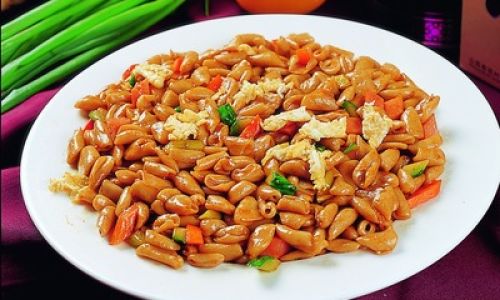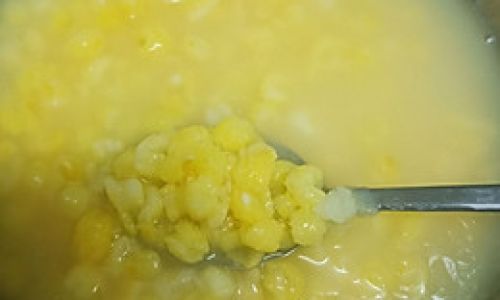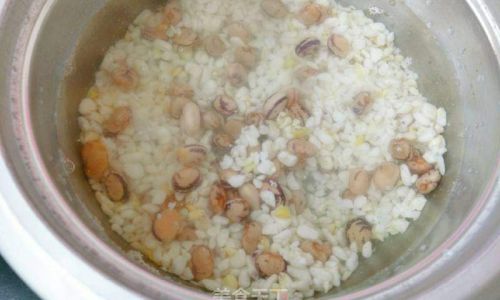Introduction
Fried Cat Ears, known in Chinese cuisine as chao mao er duo, is a dish that marries simplicity with complexity, offering a symphony of textures and flavors that delight the palate. Despite its whimsical name—which refers to the small, curled pasta shapes resembling a cat’s ear—this dish is a beloved staple in many households, particularly in northern China. The name itself sparks curiosity, inviting diners to explore a culinary tradition that dates back centuries. This article delves into the history, ingredients, and meticulous preparation required to master this dish, ensuring that even novice cooks can recreate its magic in their kitchens.
The Origins and Cultural Significance
The origins of mao er duo can be traced to the Shanxi province of China, a region renowned for its wheat-based noodles and dumplings. Legend has it that the dish was invented by resourceful cooks who transformed leftover dough into playful shapes, inspired by the delicate curves of a cat’s ear. Over time, these tiny pasta pieces became a canvas for creativity, with cooks experimenting with stir-frying techniques, sauces, and accompaniments. Today, chao mao er duo is celebrated not just for its taste but also for its cultural resonance—a testament to the Chinese ethos of turning humble ingredients into something extraordinary.
Ingredients: Building Blocks of Flavor
Creating authentic Fried Cat Ears requires a balance of fresh, high-quality ingredients and precise measurements. Below is a breakdown of the essential components:
-
Dough Ingredients

- 2 cups all-purpose flour (250 grams)
- ½ teaspoon salt
- ¾ cup warm water (180 ml)
- 1 tablespoon vegetable oil (for kneading)
-
Stir-Fry Base
- 3 tablespoons vegetable oil (divided)
- 2 garlic cloves, minced
- 1-inch ginger, grated
- 1 small onion, thinly sliced
- 1 carrot, julienned
- ½ red bell pepper, julienned
- ½ yellow bell pepper, julienned
- 1 cup snap peas, trimmed
- 1 cup cabbage, shredded
-
Sauce Mixture
- 2 tablespoons soy sauce
- 1 tablespoon oyster sauce
- 1 teaspoon rice vinegar
- 1 teaspoon sesame oil
- 1 teaspoon sugar
- ¼ cup chicken or vegetable broth
- 1 teaspoon cornstarch (mixed with 2 tablespoons water)
-
Optional Garnishes
- Chopped cilantro
- Toasted sesame seeds
- Sliced green onions
- Red pepper flakes (for heat)
The Art of Making Cat Ears: Step-by-Step Guide
Crafting the Dough
The foundation of Fried Cat Ears lies in its dough—a supple, elastic mixture that yields tender yet chewy pasta. Begin by combining the flour and salt in a large mixing bowl. Gradually pour in the warm water while stirring with chopsticks or a wooden spoon until a shaggy dough forms. Transfer the dough to a lightly floured surface and knead for 8–10 minutes, or until smooth and elastic. If the dough feels sticky, add a teaspoon of flour at a time; if too dry, sprinkle with water.

Once kneaded, shape the dough into a ball, rub it with vegetable oil, and cover with a damp cloth. Let it rest for 30 minutes. This resting period allows the gluten to relax, making the dough easier to roll and shape.
Shaping the Cat Ears
This is the most creative—and labor-intensive—step. Divide the dough into four equal portions. Working with one portion at a time (keep the others covered to prevent drying), roll the dough into a thin rope about ½ inch in diameter. Cut the rope into ½-inch pieces.
To shape each piece, place it on a lightly floured surface. Using your thumb, press down on the dough while simultaneously flicking it forward. This motion creates a small, curved shape with a indentation on one side—resembling a cat’s ear. Repeat with the remaining dough.
Pro Tip: For efficiency, use a gnocchi board or the tines of a fork to create ridges, which help the pasta hold sauce.
Cooking the Cat Ears
Bring a large pot of salted water to a rolling boil. Add the shaped cat ears and cook for 3–4 minutes, or until they float to the surface. Drain and rinse under cold water to halt cooking. Toss with a drizzle of oil to prevent sticking.

Stir-Frying to Perfection
Heat 2 tablespoons of vegetable oil in a wok or large skillet over medium-high heat. Add the garlic and ginger, stir-frying for 30 seconds until fragrant. Toss in the onion, carrot, and bell peppers, stir-frying for 2–3 minutes until slightly softened. Add the snap peas and cabbage, cooking for an additional 2 minutes.
Incorporating the Sauce
In a small bowl, whisk together the soy sauce, oyster sauce, rice vinegar, sesame oil, sugar, and broth. Pour this mixture into the wok, stirring to coat the vegetables. Add the cooked cat ears and toss gently to combine.
Thickening the Sauce
Stir the cornstarch slurry and pour it into the wok. Continue stirring for 1–2 minutes until the sauce thickens and clings to the ingredients.
Final Touches
Remove from heat and garnish with cilantro, sesame seeds, green onions, and red pepper flakes. Serve immediately, ideally with a side of pickled vegetables or a cold beer.
Variations and Customizations
One of the joys of Fried Cat Ears is its versatility. Here are some ways to adapt the recipe:

- Protein Boost: Add diced chicken, shrimp, or tofu during the stir-fry stage. Marinate proteins in soy sauce and cornstarch for extra tenderness.
- Spice It Up: Incorporate Sichuan peppercorns, chili oil, or fresh bird’s eye chilies for a fiery kick.
- Vegan Delight: Substitute oyster sauce with mushroom-based stir-fry sauce and use vegetable broth.
- Herbaceous Notes: Experiment with basil, mint, or Thai basil for a fragrant twist.
Troubleshooting Common Pitfalls
- Sticky Dough: If the dough adheres to your hands or surface, lightly flour your workspace. Avoid over-flouring, as this can dry out the dough.
- Uneven Cooking: Ensure the water is boiling vigorously before adding the cat ears. Cook in batches if necessary to prevent overcrowding.
- Soggy Stir-Fry: Overloading the wok with ingredients releases moisture, leading to steaming instead of stir-frying. Cook vegetables in stages if needed.
- Bland Flavor: Balance the sauce’s saltiness with a touch of sugar, and don’t shy away from aromatics like garlic and ginger.
The Science Behind the Texture
The al dente texture of Fried Cat Ears is no accident. Cooking the pasta until it floats ensures it’s tender yet firm, while the cold-water rinse halts cooking and prevents clumping. The stir-fry process, conducted at high heat, caramelizes the vegetables slightly, creating depth of flavor. The sauce’s cornstarch thickener acts as a binder, ensuring every bite is coated in savory goodness.
Nutritional Profile and Dietary Benefits
A single serving of Fried Cat Ears (approximately 1½ cups) contains roughly 350 calories, with a balanced macronutrient profile:
- Carbohydrates: 60g (from the pasta and vegetables)
- Protein: 8g (adjustable with added meat or tofu)
- Fat: 10g (primarily from vegetable oil)
- Fiber: 4g (from vegetables like cabbage and snap peas)
The dish is rich in vitamins A and C, thanks to the colorful bell peppers and cabbage, while garlic and ginger provide antioxidants.
Pairing Suggestions
Fried Cat Ears pairs beautifully with:

- Chilled Tsingtao Beer: The crisp, malty flavor cuts through the dish’s richness.
- Lightly Pickled Cucumbers: Their acidity balances the stir-fry’s savory notes.
- Steamed Jasmine Rice: For those who prefer a heartier meal.
Preserving Leftovers
Leftovers can be stored in an airtight container in the refrigerator for up to 3 days. To reheat, drizzle with a touch of oil and stir-fry over medium heat until warmed through. Avoid microwaving, as this can soften the pasta’s texture.
Conclusion: A Dish That Transcends Borders
Fried Cat Ears is more than a meal—it’s a celebration of culinary ingenuity. From its humble origins in rural China to modern kitchens worldwide, this dish embodies the joy of transforming simple ingredients into something extraordinary. Whether you’re a seasoned cook or a curious novice, mastering Fried Cat Ears offers a gateway to Chinese home cooking, one bite at a time. So gather your ingredients, roll up your sleeves, and let the rhythm of shaping, stir-frying, and savoring guide you to a newfound appreciation for this timeless classic.
Epilogue: The Joy of Shared Meals
In a world where food trends come and go, Fried Cat Ears remains a constant—a dish that invites connection, laughter, and the simple pleasure of breaking bread (or pasta) with loved ones. As you savor each chewy, sauce-coated bite, remember that cooking is not just about following a recipe; it’s about weaving stories, traditions, and memories into every plate. And in that spirit, may your Fried Cat Ears always be perfectly al dente, your sauce glossy, and your company merry.






0 comments